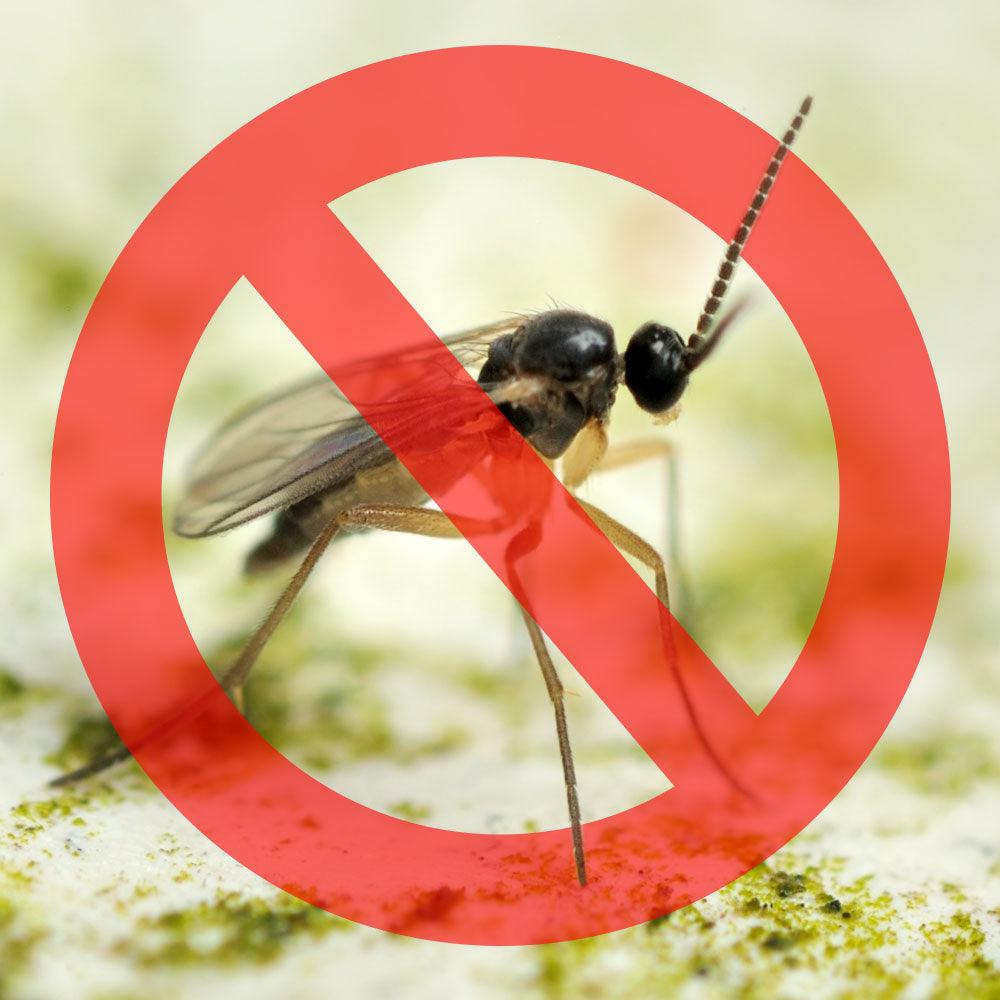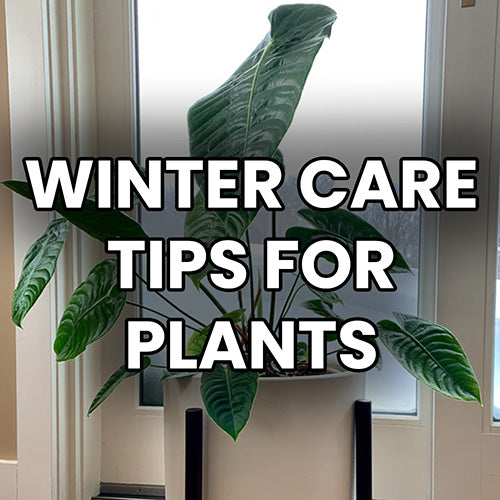
How to Get Rid of Fungus Gnats on House Plants
Share this with friends
If you need to know how to get rid of fungus gnats, then you're in the right place!
We always want to see our house plants healthy, and pest-free. However, our plants have nutrient rich soil, moisture from watering, and you may have found a small gnat flying around your gorgeous house plant.

Don't worry! Fungus gnats are easy to get rid of, and we'll teach you everything you need to know.
What are fungus gnats?
Fungus gnats are a common pest of indoor tropical house plants, where humidity and moisture are abundant. You will likely notice fungus gnats when you see the adults flying around your house plant, or together at a nearby window ledge.
The adults that fly are only a nuisance, and pose no threat to humans and health at all. It is the larvae in the soil that are the problem you will want to address. The larvae eat a lot to grow, and by doing so they will eat away and damage your plants' roots, leading to overall poor plant health. Adult fungus gnats live for one week, and can lay up to 300 eggs in rich moist soils. About 4-6 days later, larvae emerge and begin feeding on plant roots.
Because of their quick lifespan, potted plants indoors can host each stage of life, in multiple generations at once. This means that most remedies will require repeated applications until all eggs have been eliminated. We have multiple remedies below that will have you on the right track to better plant health.
Fungus Gnat Symptoms
Most plant lovers notice the obvious first symptom – adults flying. The adults are not strong and cannot fly too far, so they will tend to stay close to your plant. If you stir the soil, you may notice fungus gnats in different stages of life. The larvae will look like a very small clear tube with a black tip.
When left untreated, plants will start to show signs of stress. Fungus gnats will not damage the leaves of the plant directly; they eat through root hairs and will use the essential nutrients in the soil that your plant needs to survive. This can lead to the wilting and yellowing of some plant leaves, slow or weak growth, and an overall loss of vigor.

How to Get Rid of Fungus Gnats
The first step is to limit how much water you are providing the plant. In general, it is best to let the plant dry out completely before watering again. However, many plant lovers over-water, which will provide the perfect conditions for fungus gnats to start reproducing. Tropical plants are accustomed to a soil that dries out on occasion, so it is best to replicate those conditions inside as well. As the soil dries, the fungus gnats will start to reduce in numbers as it disrupts their reproductive cycle.
You should also try using Koppert's Entomite-M for pest prevention. With one small sachet once per month you can get rid of pests, and also prevent them in the future.
As usual, sticky traps are the most common form of pest control in all houseplants. Place a sticky trap directly on the soil of your plant to catch any gnat walking by. Replace the trap every two days. Yellow traps are the best for insects.
Fungus gnats are just like fruit flies, so a 50/50 mixture of cider and vinegar placed nearby will also attract gnats. Place a small dish of the mixture nearby, or even on the soil of the plant to keep it out of the way.
There are always insecticidal products and sprays available to control unwanted pests. There are products that target the larval stage or the adult stage, but either is fine. As long as you target one stage of their life cycle and reapply frequently, you should be able to eliminate all plant flies in just a few weeks.
In Summary
Although fungus gnats don't carry diseases, and are completely harmless to humans, they can impact the health of your tropical house plants. By keeping pests away, your plants will love you back with a healthy appearance that brightens your home.





